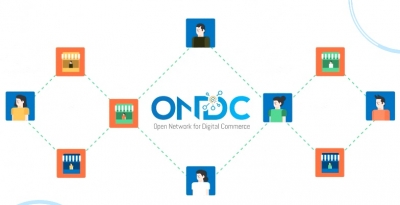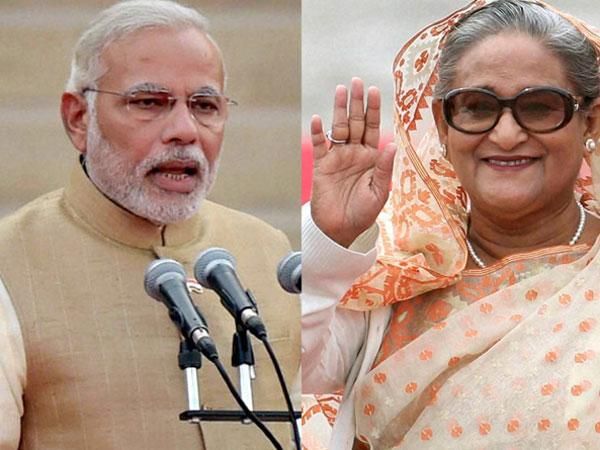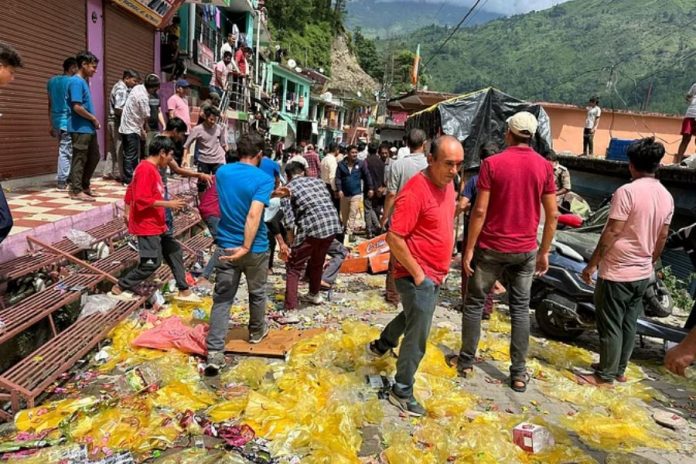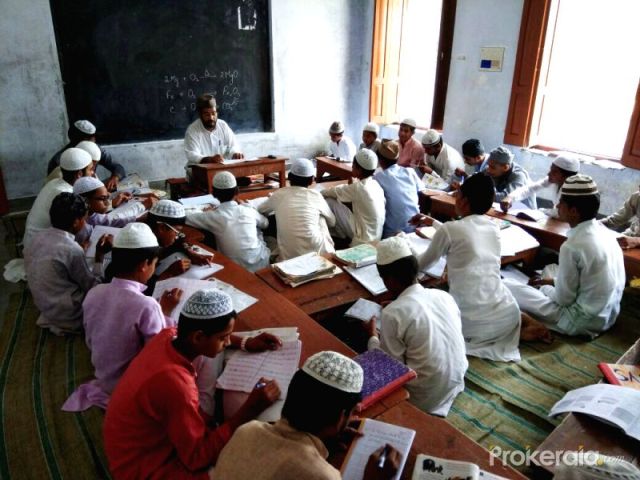
by Editor | Sep 4, 2024 | News, Politics
Mumbai: The government-run Open Network for Digital Commerce (ONDC) is now enabling more than 1.2 crore orders per month, with over six lakh sellers live on the network, it was announced on Tuesday.
ONDC was awarded the prestigious gold award under the category ‘application of emerging technologies for providing citizen-centric services’ in the National Awards for e-Governance (NAeG) at an event here.
The network is empowering a diverse range of sellers, including lakhs of small businesses, artisans, women entrepreneurs, farmers, and street vendors to compete effectively and reach a wider audience.
“ONDC functions with a startup mindset and government scale approach wherein it is adapting to evolving market dynamics with agility, driven by a team of technocrats and mentored by veteran ONDC Advisory Council,” according to Ministry of Commerce and Industry.
By virtue of being interoperable, unbundled, and decentralised, ONDC splits a complex system into discrete microservices that different players can offer separately, with positive outcomes for all. ONDC architecture fosters trust in e-commerce system.
ONDC is further expanding its capabilities for deeper and greater integration with key platforms of the government.

by Editor | Sep 4, 2024 | News, Politics
Why and how India, perhaps always, misread the writing on Bangladesh wall is what the latest fiasco is all about. Bangladesh outgoing Awami League Prime Minister Sheikh Hasina Wajid, had to flee Bangladesh to India on August 5, which has a ‘material consonance’ with the date as it relates to August 5, 2019, perhaps now more important for BJP establishment then August 15, India’s Independence Day, as it is the date when BJP led PM Narendra Modi nullified Article 370 of India’s Constitution. It had given Special-Status to Jammu & Kashmir.
Another ‘uncanny resemblance’ is also not from any far distance, as it was August 15, 2022, when Afghanistan President Ashraf Ghani also had to flee and Afghan-Taliban formed the government. In both the cases India had to bear-the-brunt as Indian consulates were burnt in Afghanistan and India’s Cultural Center was done the same in Dhaka-the Bangladesh capital. It may also be remembered that it was also the same August 15, 1975, when Hasina’s father, Sheikh Mujibur Rehman, the founder of Bangladesh was assassinated! Bangladesh has therefore given ‘two-gifts’, one to the then PM Indira Gandhi and now to Narendra Modi. No wonder, the corollary says, what Ashraf Ghani was for US, Sheikh Hasina has turned out to be for India. India’s policy in Bangladesh, for all practical purposes, has been grievously caught on the wrong-foot.
India’s policy had to boomerang, as India by its sheer-weight, and a pursuant of ‘aggressive foreign-policy’, its fiascos all written large in Maldives too, could not tap the current, as immediately after abrogation of Article 370, there were ‘massive’ protests in Dhaka, available on Dhaka Tribune via Youtube, in which tens-of-thousands had participated against New Delhi. The metamorphosis had begun. Came January 2024, and Sheikh Hasina, swept the polls, to become PM for the fifth-time, ‘unopposed’ as the entire Opposition had boycotted elections. It is another matter, that in India, the INDIA alliance, was also on the verge to boycott elections, owing to allegations as to how the entire Opposition has been stifled, in the past one decade, as once even four-Supreme Court judges, had to sit on ‘protest’ to save-democracy.
India’s lens on Bangladesh was perhaps fixed on no-where. A deliberate analysis of August 5, 2019 Dhaka protests, had a popular sentiment against India, vented out by Chairman of Islami Oikya Jote, an alliance of four-parties, that India does not ‘give us water despite signing an agreements’ . This statement had to be read with what had happened in Kashmir. Bangladesh in fact is an almost unanimous society, everyone speaks Bengali, there is no sub-nationalism unlike Balochistan and KPK issues in Pakistan, and also, there are almost negligible differences between Shia-Sunni, Deobandi or Barelvi schools of thought. The Indian’s policy makers should always keep in mind that the foundations of Muslim League were laid down in Dhaka.
What happened in Dhaka and Afghanistan is the same of what had taken place in Sri Lanka (2022) but it did not turn out to be an anti-India tirade, unlike in the former cases. Why? Of course not withstanding the ‘historic issues’ with Afghanistan but in case of Dhaka, it is India which had helped Bangladesh become a nation. And, today Bangladesh is claiming its second independence! Why? Perhaps, the answer lays in the long standing water-issues which Bangladesh has with India.
The dominant perception is that India has upended Bangladesh water-woes, for decades, which primarily started after 1975 construction of Farakka Barrage over Ganga river, known as Padma river in Bangladesh. India has since then been operating the Farakka Barrage to divert water from the Ganges to navigate Kolkata port while Bangladesh, highly dependent on Padma river has been the worst hit due to ‘illegal withdrawal’ of water by India, is a common cry in Bangladesh. This treaty, after 30 years, is slated for renewal in 2026. The same grouse pertains to Teesta river waters as India has long been engaged into unilateral withdrawing of water by building barrages and construction of infrastructure and hydroelectric projects, which dries up Teesta river and has left Bangladesh deprived of its fair-share. These two issues have precipitated the ‘anger’ on the Dhaka Street. The Teesta crisis, is considered a ‘blockade for decades to come’ as there hasn’t been a water-sharing agreement yet, which was on the table, when Sheikh Hasina had visited New Delhi last June.
She back in 2022 had offered India access to Bangladesh strategic Chittagong Port, as she wanted Indian support to make her mend ties with Washington, which had made Bangladesh fall under US sanctions over her Rapid Action Battalion (RAB) use. RAB is an anti-crime and anti-terrorism unit of Bangladesh Police. As many as 12 human rights organisations had written to UN to desist from taking RAB personnel in its missions as RAB is accused of hundreds of forced disappearance and extra judicial killings. India had declined to comment. The groups allege that RAB and other Bangladeshi law enforcement agencies were responsible for nearly 600 such killings. All these killings slowly added to her ultimate nemesis. Her much hyped visit to India ‘first’ in her latest tenure, with no reference to water-sharing of Teesta, had already turned to be a damp-squib, and it angered China too, where she drew a flak, as China, did not give the ‘loan-assurance’ of five-billion US dollars. She lost both pies!
There are reports of unfortunate attacks on Hindus, Awami League leaders and workers from Bangladesh. Never anyone should die out of it. Condemnable. There are now ‘revenge’ incidences reported against Muslims in India , here a leaf from history may be considered: In 1964- East Pakistan (Bangladesh now) protests had erupted after a relic-hair of Prophet Muhammed was reportedly stolen in Kashmir, this led to Hindus flee to India. Rourkela in Odisha happened! The place had an influx of refugees, Muslims offered Hindus coming via trains, at Rourkela, bread and eatables, someone vomited, triggering a rumour that Muslims were ‘mixing poison’ and a riot ensued. This riot left around 2000 dead, mostly Muslims, as has been acknowledged by SK Ghosh, the then Additional IG Police of Odisha!

by Editor | Sep 4, 2024 | Muslim World, News
Tensions are rising in Uttarakhand’s Chamoli district following the alleged molestation of a minor girl by a youth from a different community. Authorities have imposed Section 163 of the Bharatiya Nagarik Suraksha Sanhita, 2023 (BNSS) within a 200-meter radius of the Nandanagar market area to manage the situation.
Police sources report that 500 unidentified individuals have been booked in connection with vandalism at a site over the past 48 hours. On Tuesday, a case was registered against 200 unidentified people at the Nandanagar police station, adding to the 300 previously booked on Monday.
Protests erupted in Gopeshwar on Tuesday, with demonstrators expressing outrage over the incident. A large police presence has been deployed to maintain order. Superintendent of Police Sarvesh Panwar stated that the main accused, Arif Khan (26), a resident of Sofatpur village, Bijnor district, was arrested on Sunday night. However, locals are demanding the arrest of three other alleged accomplices.
The controversy began when Arif, a salon owner, allegedly made obscene gestures at a minor girl from the area. The incident sparked widespread anger, leading to a mob vandalizing seven shops owned by members of the Muslim community. The market was forced to shut down for the day.
On Tuesday, the market remained closed, and protesters blocked vehicular movement. Villagers from nearby areas staged a sit-in protest, chanting slogans and demanding justice for the victim. The protesters also called for the District Magistrate (DM) to verify the identities of all outsiders and expel individuals with criminal backgrounds from the area.

by Editor | Sep 4, 2024 | News, Politics
In Barpeta district, Assam, 28 Bengali Muslims were detained and sent to a transit camp on September 2, after being declared as foreigners by the Foreigner Tribunals. The incident, captured in tense and emotional visuals, showed family members weeping uncontrollably as their loved ones were forced onto a police bus. The atmosphere was charged with sorrow and anxiety, with a crowd gathering to witness the scene.
The detainees, one from each of the 28 families, were summoned to local police stations under the guise of signing documents before being taken to the transit camp in Goalpara district, about 50 km away. The Foreigner Tribunals, quasi-judicial bodies established under the Foreigners Act of 1946, had declared these individuals as foreigners.

by Editor | Sep 3, 2024 | Muslim World, News
Education among Muslims is a serious issue in India. While the literacy rate among Muslims is showing an upward graph, higher education dropout is a major problem among the Muslim community.
Since education is directly linked to income level and economic level is dependent on employment and wealth generation, a vicious circle has developed in India in which Muslims are trapped all over the country.
The participation of Muslims in salaried regular employment is 43.39%. This figure may look bright but after a scratch, it comes to notice that Muslims are engaged in the B&C category kind of jobs and are at the bottom level of income. Since Muslims do not get jobs they are in self-employed occupation. The statistics show their share is 38.89%. This again is not the correct picture because Muslims are at a low level of self-employed income generation. Then around 17.71% of Muslims work as casual workers. In such a situation how can Muslims of India afford the luxury of education?
The poor socioeconomic condition of Muslims is the prime reason for the low educational status of Muslims in India. An evaluation of educational status among Muslims done in 2014 says that Muslims have higher dropout rates in senior secondary and higher levels of education.
To address the problem of dropouts among Muslim students, the government is offering many scholarship- schemes and programs about which the community must be enlightened. They are as follows:
i) Pre & Post Matric Scholarship Scheme, Merit-cum-Means based Scholarship Scheme through Direct Benefit Transfer (DBT) mode.
ii) Naya Savera scheme- Free coaching and allied Scheme: This scheme aims to provide free coaching to students/candidates belonging to economically weaker sections of minority communities for preparation of entrance examinations of technical/ professional courses and competitive examinations.
iii) Padho Pardesh scheme: This scheme gives a subsidy in the interest rate on educational loans to the students of economically weaker sections of minority communities. This loan is also applicable for higher studies abroad.
iv) Nai Roshni scheme: This is a leadership development scheme for women belonging to minority communities.
v) Seekho Aur Kamao: It is a skill development scheme for the youth of 14 – 35 years age group, aiming at improving the employability of existing workers, school dropouts, etc.
vi) Pradhan Mantri Jan Vikas Karyakram (PMJVK) scheme: It is a Scheme designed to address the development deficits of the identified Minority Concentration Areas. The areas of implementation, under PMJVK, have been identified based on minority population and socio-economic and basic amenities data of Census 2011.
vii) Upgrading Skills and Training in Traditional Arts/Crafts for Development (USTTAD): This scheme was launched in May 2015. It aims to preserve the rich heritage of traditional skills of Indigenous artisans/craftsmen. Under this scheme, Hunnar Haats are organized all over the country to provide a nationwide marketing platform to Minority artisans and entrepreneurs and to create employment opportunities.
viii) Virasat Ka Samvardhan (PM Vikaas): The PM Vikas scheme has been added to the Ministry of Minority Affairs’ Budget in 2023. It is a skilling initiative focusing on the skilling, entrepreneurship, and leadership training requirements of the minority and artisan communities across the country. The scheme is intended to be implemented in conjunction with the ‘Skill India Mission’ of the Ministry of Skill Development & Entrepreneurship through integration with the Skill India Portal (SIP).
The way forward for the Muslim community is that they register NGOs in all parts of the country liaison with the education department of the government and implement the schemes in the areas of Muslim concentration.
This could include providing better educational facilities adjacent to areas where the Muslim population is sizable. The facilities may include giving Muslim students vocational and skill-based training to improve their employment prospects.
The most backward Muslim regions in India are the ‘Nuh’ district of Haryana and the ‘Seemanchal’ region comprising nine districts of Bihar. Muslims in these places are in dire need of “educational intervention.” The community leadership should rise to the occasion and make targeted efforts to improve the education status of Muslims in these backward regions of the country.
Muslim community instead of looking at the hostile government’s largesse can shoulder the task of improving the education level of the community.
In these testing times, the community needs more Muslims to be posted at police stations throughout the country. Similarly, more Muslims are required for administrative jobs so that the community may feel empowered. It is only through education that Muslims can compete in the competitive exams and fill the government posts that are open to them.
This can happen only when the community leadership can play a major role in improving the educational standard of Muslims in India. The silver lining in the dark sky is that religious leaders i.e. clerics, philanthropists, NGOs, etc. are getting involved in educating the Muslims. Organizations like Jammait – e- Ulma – e Hind, Khanqa – e- Ramani, at Munger, Bihar have stepped in to take up the challenge. More NGOs are coming forward to improve the educational standards of Muslims in India.
Indian Muslims have woken up to the reality, that education is the key to the progress of the community in India. The work at the grassroots level has begun. There is no doubt, this is a tall order, but that’s the way forward if Muslims have to live with dignity in India.





